Warning: Undefined variable $k in /home/nginx/domains/wired2fishcom.bigscoots-staging.com/public/wp-content/themes/understrap-child-0.6.0/functions.php on line 984
Warning: Undefined variable $k in /home/nginx/domains/wired2fishcom.bigscoots-staging.com/public/wp-content/themes/understrap-child-0.6.0/functions.php on line 987
Today, we’re going to break down everything a beginner needs to know about how to fish a ChatterBait and offer up some pointers that the more seasoned ChatterBait anglers can benefit from as well. A ChatterBait is one of the best bass fishing baits of all time. The furious and frantic vibration of a bladed jig triggers something primal in bass and initiates strikes at an astonishing rate in comparison to most other lures.
These baits work extremely well in muddy water, while also being super effective in clear water too. They can be fished in open water or around cover. Additionally, most anglers find these baits to be among the easiest to skip. Whether you refer to them as vibrating jigs, bladed jigs or ChatterBaits, these baits truly are all-terrain, power-fishing lures that are great for targeting big bass in a wide range of situations.
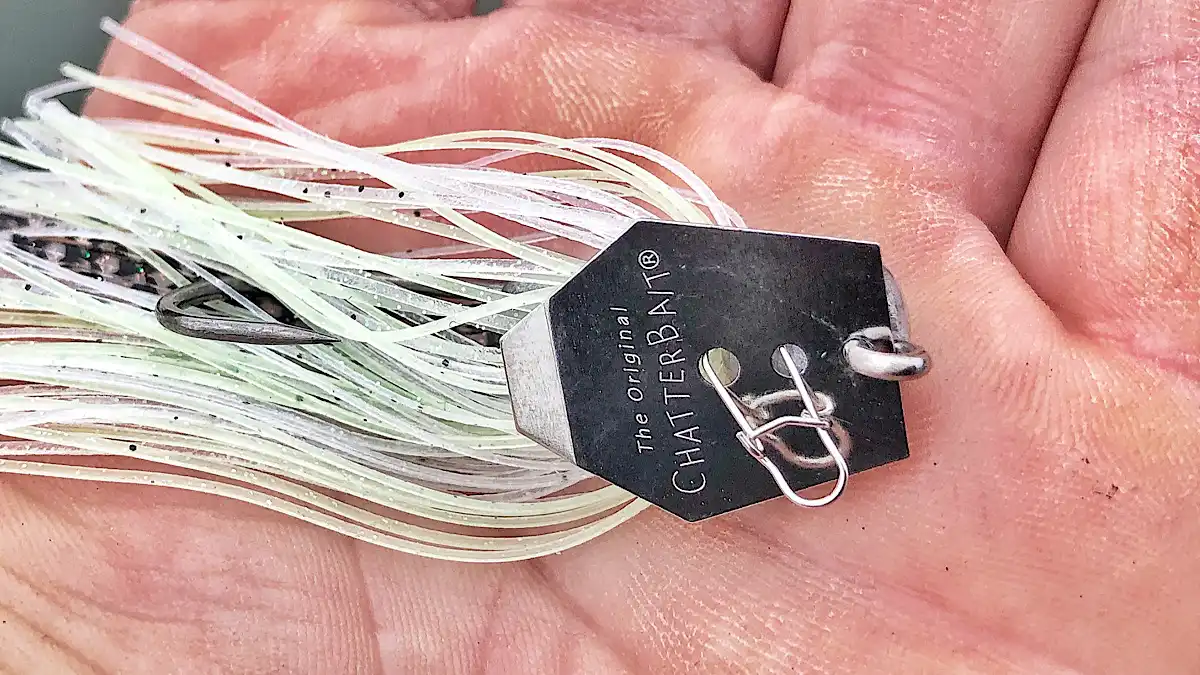
WHAT IS A CHATTERBAIT?
Let’s make sure we’re all on even footing before diving off into the rest of this conversation. For starters, a Z-Man ChatterBait is actually a brand specific version of a vibrating or bladed jig. However, the term ChatterBait is often used to refer to this genre of baits as a whole, the same way the term “Fluke” is often used to refer to any soft plastic jerkbait or “Alabama Rig” is interchangeable with the term umbrella rig in many people’s minds.
In reality though, these are trademarked names that belong to Zoom, Mann’s and Z-Man. We want to acknowledge that right out of the gate. Though Z-Man does reign as one of the longer standing producers of high quality vibrating jigs, there are other companies that have strong offerings as well. Berkley manufactures the Slobber Knocker for instance, while Strike King has the Thunder Cricket. Though these baits aren’t ChatterBaits in the strictest of sense, they are still great vibrating/bladed jigs.
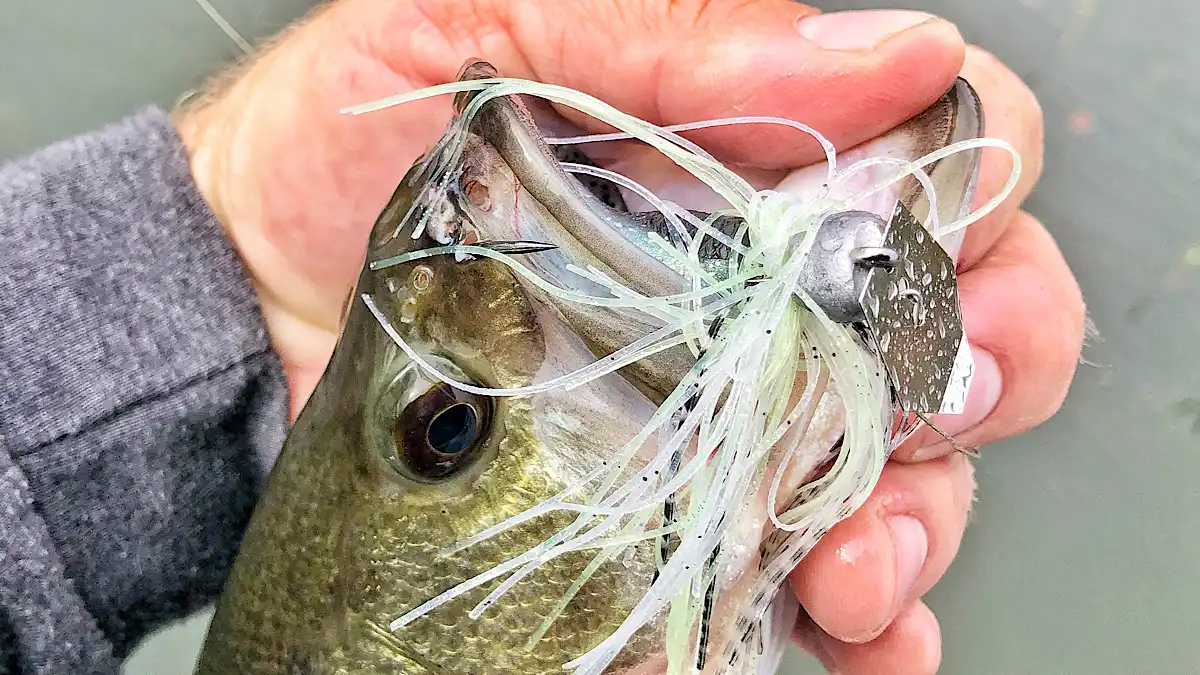
INTRODUCTION: HOW TO FISH A CHATTERBAIT
For the angler new to fishing ChatterBaits and other bladed jigs, this whole new world can be a little intimidating at first. Though these baits are similar in some ways to spinnerbaits, swim jigs and squarebills, they are also quite unique. There are differing opinions on exactly what gear is needed to fish these baits.
Some anglers, like Brett Hite who is arguably the best to ever fish a ChatterBait, prefer parabolic, 8-foot, heavy action, glass rods paired with 20-pound fluorocarbon and slower gear ratio reels in the 6.3:1 range. Then, there are guys like me who prefer to fish bladed jigs on braided line with a medium heavy, fast action, composite rod in the 7-foot, 3-inch realm with a 7:1 gear ratio reel.
Neither setup is “wrong”. A case can be made for why each is better, especially in certain situations. At the end of the day, most of it really comes down to personal preference. I’m more efficient with my setup and Hite is more efficient with his. I point this out to illustrate the vastly differing and nuanced opinions that can understandably muddy the waters for newcomers.
If you’re a beginner in bladed jig fishing, don’t overcomplicate it. The beauty of these baits is that they work well on a variety of gear. The best all-around baitcasting combo for a beginner, in my opinion, is a 7-foot, medium heavy rod with a 7:1 gear ratio reel. This setup will serve you well as you start off with a ChatterBait. Spool one of these up with 15-pound fluorocarbon, tie on a basic 3/8 ounce bladed jig like the Z-Man ChatterBait EVO, and you can catch a lot of fish.
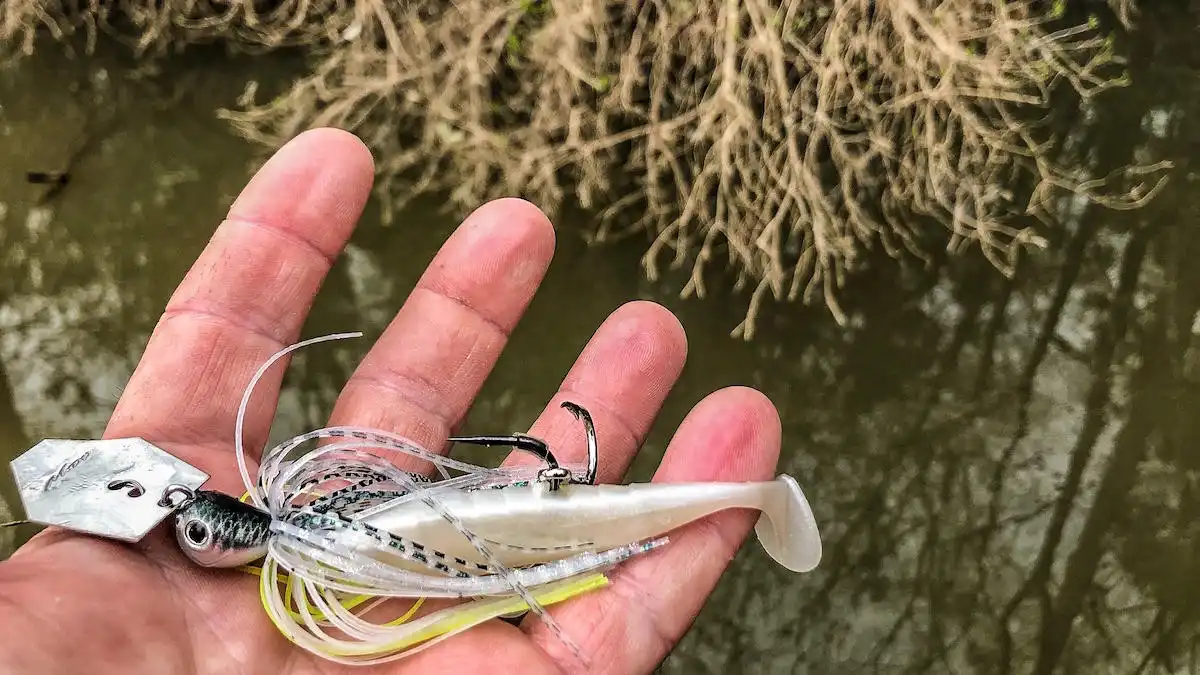
WHERE, WHEN AND HOW TO FISH A CHATTERBAIT
Bladed jigs work well in open water and around cover but they are exceptionally well suited for fishing over and through submerged vegetation. Letting a ChatterBait tick the tops of hydrilla, milfoil or coontail and then snatching it free is a great way to trigger strikes. This pattern is particularly effective in the early spring.
Skipping these baits under docks and other overhead cover works very well too. ChatterBaits are great for fishing around other hardcover like wood and rocks, though there are some things to lookout for. Bladed jigs are surprisingly weedless, considering most have large open hooks. However, if you let one of these baits roll to the side a little too far when fishing through woody cover like laydowns and brush piles, you’re likely to get snagged.
You can still fish these baits through fairly dense cover, just be sure to keep the retrieve steady until you clear the wood and then you can “kill” or pause the bait just beyond the cover. This is when you’ll often trigger a strike from a bass that is either trailing the bait or setup beside the cover waiting for prey to pass by.
Bladed jigs work really well on a steady retrieve, as the bait’s movements are erratic even without any additional action imparted by the angler. You can up the ante a bit by pausing and pumping the bait on occasion as well, which will trigger a reaction from bass that are aware of the bait but haven’t quite commit to it.
Though these baits work all year long, they are especially effective in the early spring. During the pre-spawn phase, bass stage relatively shallow and feed heavily. This combination of shallow and aggressive bass is the perfect situation for fishing a ChatterBait. Look for cover like riprap, laydowns, brush piles, docks and vegetation and you’ll likely be able to get a bite on a vibrating jig.
Fishing a ChatterBait is a great way to catch bass in the summer, fall and winter too. You’ll experience the best results if you continue to look for bass relating to cover in stained to muddy water. You can also catch them in clearer, open water on some of the finessier bladed jigs like the Z-Man Evergreen Jack Hammer Stealth Blade. Look for this bite to be best when there is wind present.
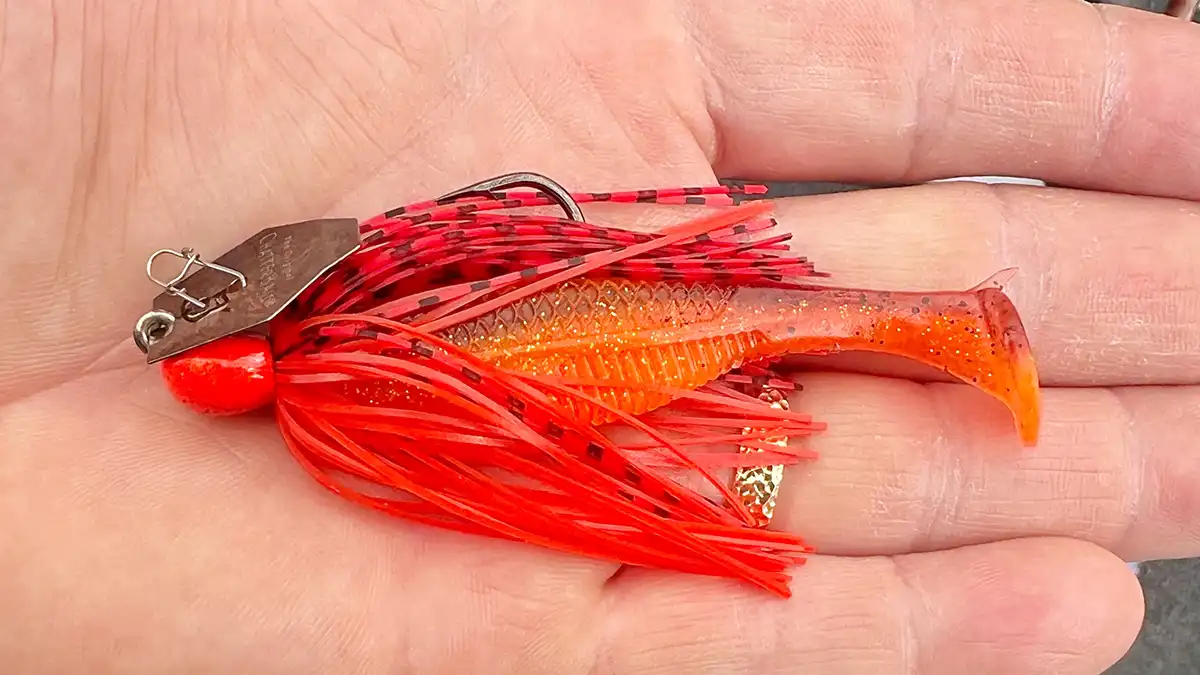
SELECTING A COLOR
Since ChatterBaits work in a wide range of situations, it’s no surprise that many different colors work well. Matching the hatch is the best way to narrow down between the dozens of different colors that are available. Green pumpkin and black and blue are a couple of standard colors that work well when bluegill and other bream are the primary forage. If shad are the main food source, use a bright white or chartreuse and white bait in muddy water and a translucent shad pattern in clear water.
In the early spring, something in red or orange can work extremely well, since bass are feeding on crawfish that are sometimes red or orange during this timeframe, depending on the fishery. Baits with a gold blade and gold flake in the skirts can be used to imitate gold shiners down in Florida, and so on. Whatever the local forage is on your fishery, try to pick a color and blade combination that closely mimics it and you’ll be on the right track.
One last note on color selection, bass will eat a ChatterBait at night really well in the summer. Primarily dark skirts like black with a few strands of blue, chartreuse or red, as the profiles of these baits show up surprisingly better in the dark than lighter colored baits.
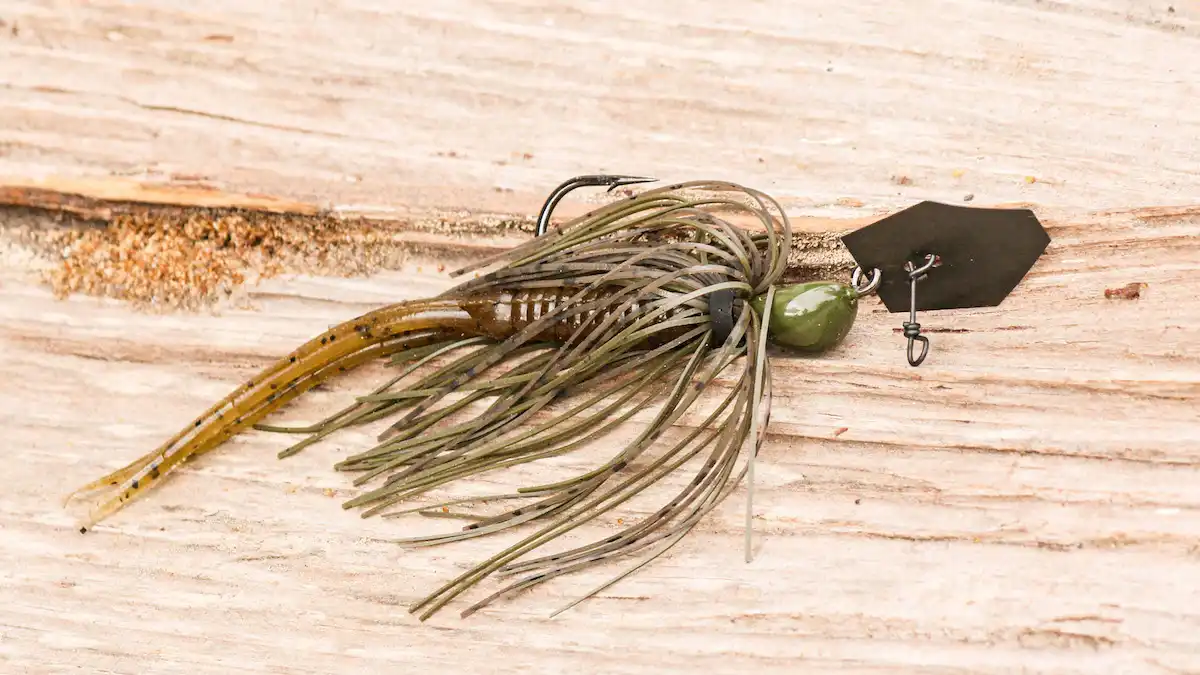
SELECTING A TRAILER
It’s a must to pair your bladed jig with a soft plastic trailer. Remember, there’s no need to overcomplicate this. Adding something as simple as a Z-Man ElaZtech Split Tail TrailerZ to the back of a bladed jig will add a ton of action and round out the profile of the bait nicely.
As you learn and grow in bladed bait fishing, you’ll find that you can really fine tune the profile, action and capabilities of a bladed jig by using different trailers. For instance, a craw-style trailer like a Strike King Rage Chunk can be used to add lift to the bait. This will allow you to fish the bait slower and higher in the water column. On the other hand, if you use a swimbait trailer like a Rapala Crush City Mayor it will allow you to fish the bait faster while also letting it get lower in the water column. There are also forked-tail shad imitation trailers like the Zoom Shimmer Shad that complete the profile of a ChatterBait really well.
For more information on this topic, you can read our article on Trailer Selection for Swim Jigs and apply the same principles to selecting trailers for your vibrating jigs. Here is another article on the Best ChatterBait trailers.
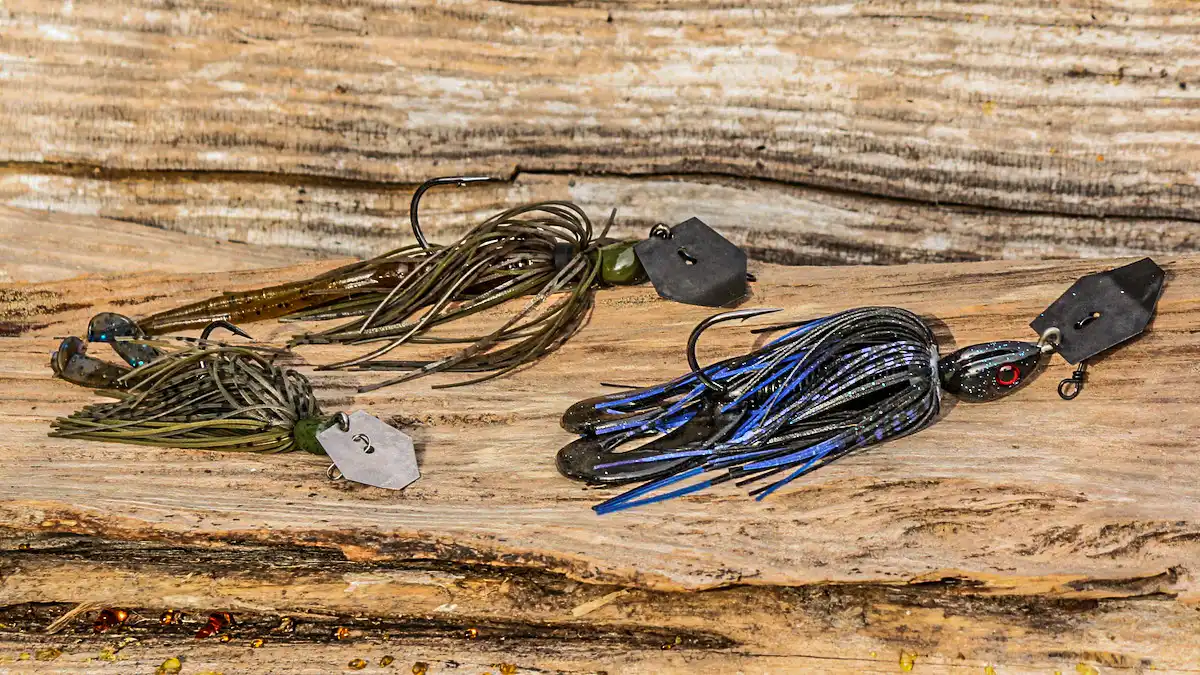
SELECTING A BAIT
There are dozens of companies producing hundreds of different bladed jigs now. Again, if you want to keep it simple, a standard 3/8 ounce Z-Man ChatterBait Evo is a great place to start. You can read about several more good options here.
For a quick crash course, the Z-Man ProjectZ ChatterBait is great for fishing at night. It has a slightly larger blade and comes in larger, 3/4 and 1 ounce versions, which are great for targeting summer bass that often reside in deeper, cooler water.
The Z-Man Evergreen Stealth Blade has a clear blade, which makes it perfect for high pressure situations when the water is clear. The compact Z-Man MiniMax is a fantastic bait for targeting bass in smaller fisheries like ponds and creeks, or even on larger fisheries when bass are keying on smaller bait.
The Z-Man CrosseyeZ ChatterBait comes with a weedguard making it better suited for heavy cover. The Z-Man Evergreen ChatterBait Jack Hammer is considered by many to be the best all-around bladed jig to date.
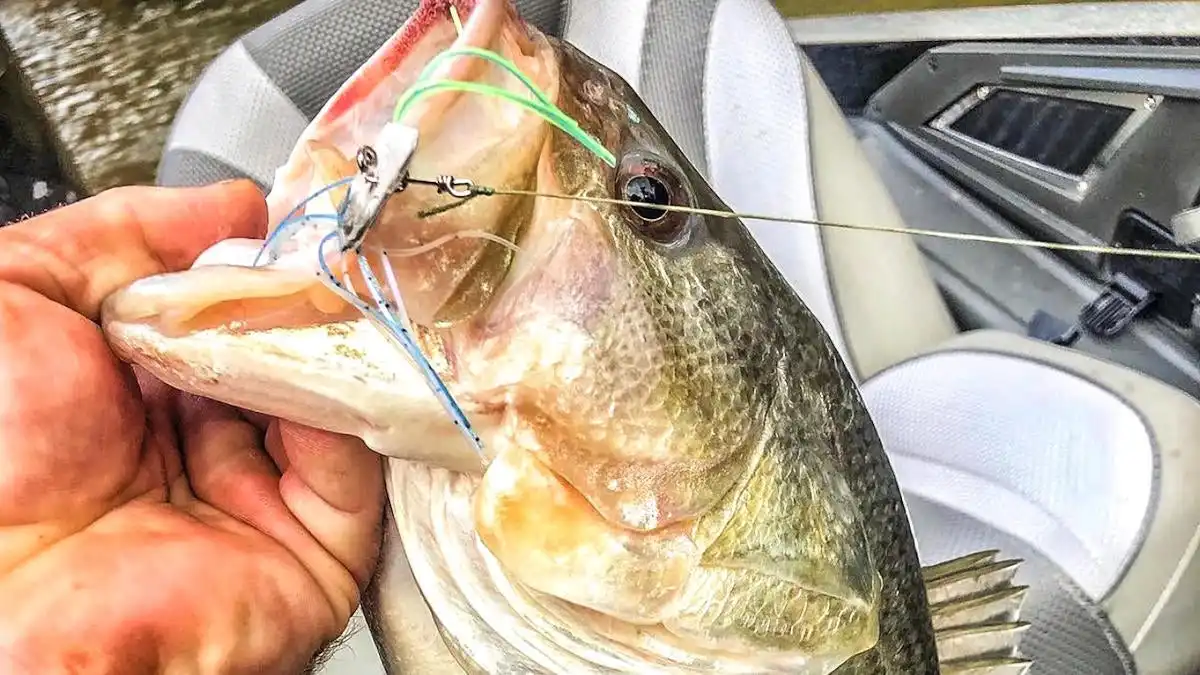
IN CONCLUSION
Though fishing a ChatterBait can seem a little intimidating at first, you can certainly keep things simple early on and still catch loads of fish. Just take a basic baitcaster setup and tie on a ⅜-ounce bladed jig and you’re ready for action. Keeping the bait upright when passing cover is key for avoiding snags, but pumping and pausing the bait when you can will certainly generate more strikes.
As you start getting bites and grasping the basics of bladed jig fishing, don’t be afraid to explore the intricacies of the technique. There are lots of little nuances when it comes to bait, color and trailer selection that will help you dial in different setups for different situations. In time, you’ll find that vibrating jigs are very versatile lures and they catch big fish. I’ve been chucking these lures around for a couple decades now and can attest to it myself. ChatterBaits and other bladed jigs are flat-out fish catchers.












